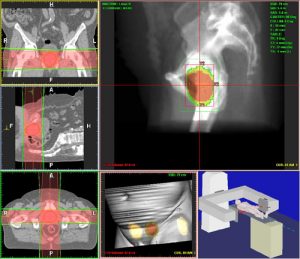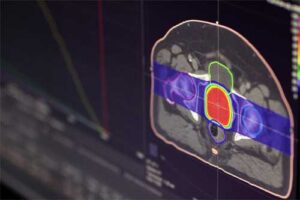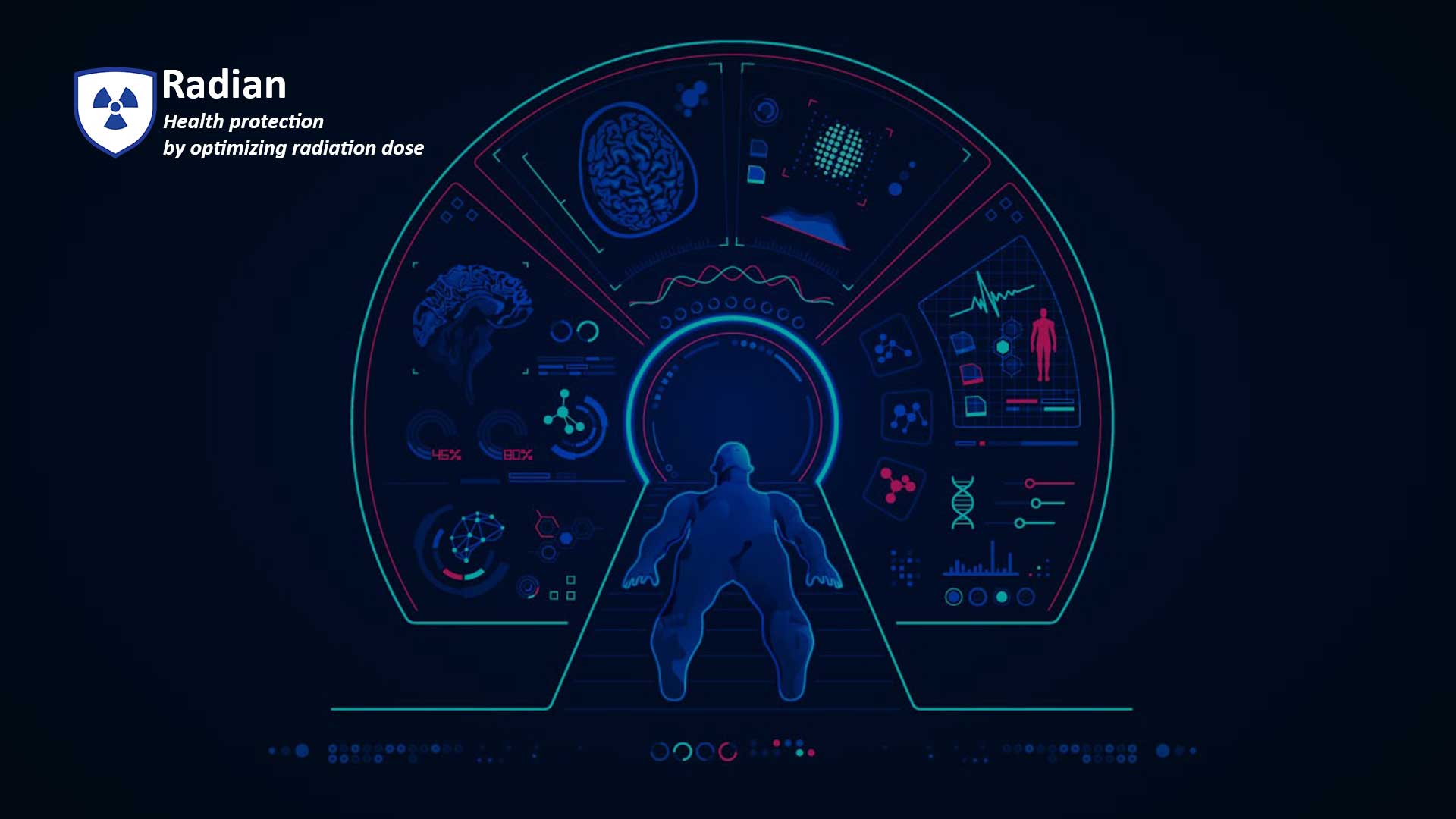Calculating radiation dose is an increasingly important field in diagnostic radiology. But what is dosimetry and why is it important and necessary for cancer treatment?
Whether it’s weighing apples at the supermarket or medicine at the pharmacy, accurate measurements are important in everyday life. The decisions we make depend on the amount we buy, or rather the weight we measure. While an error in fruit and vegetable measurements may not be a cause for concern, when it comes to medical treatment for an illness, careful calculation is required.
But what if we want to measure the invisible?
Ionizing radiation, which can be used to treat cancer to destroy harmful cells, but is completely undetectable by humans, requires precision and reliability of measurement. Otherwise, too little or too much radiation may be harmful to the cancer patient who are being treated.

What is radiation dosimetry?
Dosimetry refers to the science by which radiation dose is determined by measurement, calculation or a combination of measurement and calculation. The technical name of radiation dose is “absorbed dose”. It is the amount of radiation energy deposited in the tissue divided by the mass of the tissue. The absorbed dose is the most important physical factor that affects the response of tumors and the rest of the body to radiation.
Why is important to calculate radiation dose?
Absorbed dose determines how much tumors and normal tissues are affected by radiation.
The higher the absorbed dose to the tumors, the more cells are killed by the radiation and the more likely it is to cure.
However, the higher the absorbed dose in normal tissues, the more likely and more severe the adverse toxic side effects of radiation may be.
An important advantage of radiopharmaceutical treatment is its ability to effectively irradiate and treat tumors throughout the body. At the same time, some radiation of natural organs is unavoidable.
Therefore, the role of radiation dosimetry in targeted radionuclide therapy is to determine, specifically for each patient, the prescribed amount of radiopharmaceutical that effectively treats the patient’s disease, while avoiding absorbed doses that damage normal tissues.

Radiation dose in diagnostic radiology
Dosimetry is an increasingly important field in diagnostic radiology.
There is an understanding among health professionals that the radiation dose received by patients from modern x-ray examinations and procedures can be considered in some way in inducing cancer throughout a population, and in some unfortunate cases, it causes acute damage for specific body parts such as skin and eyes.
Depending on the type of operation, imaging devices irradiate different doses of radiation to patients/people (who are inside the room).
There are some standard methods for collecting, classifying and reporting on radiation dose, and also some applications have been developed in this regard.
Utilizing the DICOM standard and analyzing its data can be considered as one of the known ways of operational study, with the aim of developing a practical application that calculates the amount of radiation dose by analyzing the received data.

Formulations and measurement methods for diagnostic radiology dosimetry have recently been standardized through an international code of practice that describes the methods required to evaluate different imaging modalities in diagnostic radiology.
The most common dosimetry methods are the measurement of air kerma from an X-ray machine under defined conditions. (air kerma from the X-ray device)
To ensure the accuracy of the dosimetry determination, such measurements should be performed with instruments that have a traceable calibration in a standard laboratory.
Dosimetric methods are used in radiology departments for a variety of purposes, including determining patient dose levels to optimize examinations and to help make decisions about the justification of examination choices.
Patient dosimetry is important for special cases such as X-ray examination of children and pregnant patients. It is also a key component of quality control of X-ray equipment and procedures.
Reference: Dosimetry in diagnostic radiology
